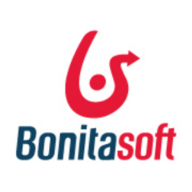

Bonita and OpenText Process Automation are both in the business process management sector. OpenText Process Automation has an advantage due to its comprehensive feature set and advanced capabilities.
Features: Bonita is known for its ease of modeling, robust customization capabilities, and integration with enterprise systems. It enables the creation of dynamic workflows with a low-code interface, simplifying the process for users. OpenText Process Automation offers a rich feature set, including extensive automation tools, advanced content management functionalities, and enhanced monitoring features, which provide detailed process tracking and optimization.
Room for Improvement: Bonita could benefit from further enhancing its low-code capabilities to make the platform more user-friendly. Adding more comprehensive integration capabilities could enhance its appeal for enterprise use. Improving the user interface to further streamline workflow creation would be beneficial. OpenText Process Automation could streamline its deployment process to attract organizations with limited IT resources. Greater flexibility in its integration with third-party systems could elevate its appeal. Enhancing the simplistic user interface could make it more accessible for a broader audience.
Ease of Deployment and Customer Service: Bonita offers a straightforward deployment model with strong support, making it suitable for organizations with limited IT resources. It provides reliable documentation and resources for users. OpenText Process Automation requires a more complex deployment but offers extensive customer service options, including comprehensive training resources and support, ensuring a well-supported implementation process.
Pricing and ROI: Bonita offers a competitive initial setup cost, providing a rapid ROI, making it an attractive option for budget-conscious companies seeking cost-effective solutions. OpenText Process Automation, while associated with higher initial expenses, offers high long-term returns facilitated by its expansive functionalities, making it a worthwhile investment for organizations prioritizing advanced features and capabilities.
| Product | Market Share (%) |
|---|---|
| Bonita | 3.1% |
| OpenText Process Automation | 0.6% |
| Other | 96.3% |


| Company Size | Count |
|---|---|
| Small Business | 14 |
| Midsize Enterprise | 4 |
| Large Enterprise | 11 |
| Company Size | Count |
|---|---|
| Small Business | 7 |
| Large Enterprise | 3 |
OpenText Process Automation offers a low-code environment for efficient development, enhanced by strong integration, dynamic case management, and OCR technology to streamline business processes across industries.
OpenText Process Automation provides a comprehensive platform for improving business processes with features that allow for significant time reduction through a low-code development environment. It integrates seamlessly with third-party systems, enabling dynamic case management and effective monitoring capabilities. By incorporating OCR technology, it enhances efficiency and lowers costs. Users benefit from its centralized architecture, which brings together diverse tools to streamline operations. Its BPM modules support automation in supply chain and vendor processes, leading to widespread implementation. Known for its stability and scalability, it also receives positive feedback for its reliable support. However, there are areas needing enhancement, such as improved low-code features, better integration, and a desire for a unified UI with better mobile compatibility. There is a call for an archival function to address database growth and concerns about pricing and performance related to the BPMN 2.0 model. Potential improvements include AI integration and enhanced modeling in the low-code platform.
What are the key features?OpenText Process Automation is implemented in industries like insurance, banking, and manufacturing for tasks such as invoice processing, accounts payable, cash management, and supply chain automation. It enables integration with systems like SAP and Salesforce, offering on-premises or cloud deployment, enhancing workflows and document orchestration.
We monitor all Business Process Management (BPM) reviews to prevent fraudulent reviews and keep review quality high. We do not post reviews by company employees or direct competitors. We validate each review for authenticity via cross-reference with LinkedIn, and personal follow-up with the reviewer when necessary.